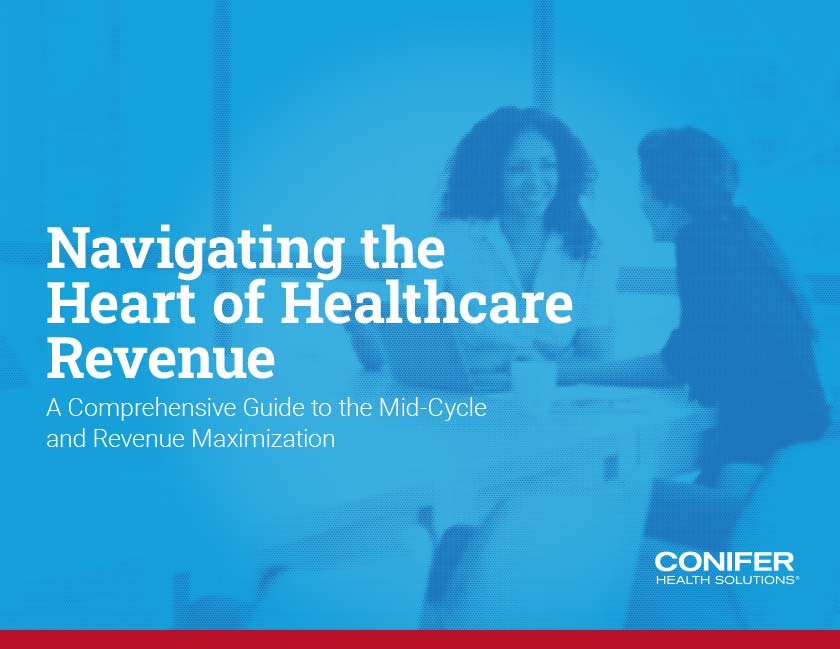CHAPTER 3
Coding And Code Validation
CHAPTER 3
Coding And Code Validation
Ensuring claims are accurate and complete upon first submission is essential for healthy cash flow. If any mandatory or conditional information is missing or inaccurate, the claim will likely be rejected or denied, causing underpayments, overpayments, payer audits, and takebacks. Because incorrect coding falls under the “fraud and abuse” category of the American Medical Association’s Principles of CPT® Coding, penalties can run into hundreds of thousands of dollars and can include incarceration.1
Because incorrect coding falls under the “fraud and abuse” category of the American Medical Association’s Principles of CPT® Coding, penalties can run into hundreds of thousands of dollars and can include incarceration.
Complete/timeliness of charge capture: 3 – 5 days after the date of service2
Average coding turnaround time: 0 – 5 days
Initial denial rate:
<5%3
Bad debt rate:
<5%4
Reimbursement (DRG) accuracy: 95%+5
Coding accuracy:
95%+6
Many common coding issues stem from staff having trouble staying up to date with regulatory and payer requirements—both of which have become increasingly complex and are continually changing.
Top Coding Issues7
- Unbundling. Using multiple CPT codes for each part of a procedure instead of the required “bundled” code that includes all procedures
- Upcoding. Coding for a higher level of evaluation-and-management (E&M) service than is warranted
- Not referencing National Correct Coding Initiative (NCCI) edits for multiple code reporting. The NCCI involves automated prepayment edits that reference code pairs billed on the same day. Not checking for NCCI can lead to the denial of one of the codes.
- Incorrect appending of modifiers. Reporting modifiers for procedure codes that already include a specific service.
- Overuse of modifier 22. When reporting a procedure is more difficult than usual, appropriate documentation must be included as proof.
- Inappropriate time-based infusion and hydration codes. This can happen when infusion or hydration is reported as continuous over a period when they were stopped and restarted at some point.
- Improper injection codes. Injections taking place during a single session should be reported as a single code.
- Not including documentation for unlisted codes. Unlisted codes that do not include appropriate documentation will be denied.
To improve coding quality, provider organizations should consider conducting regular, unbiased coding quality assessments and reviews led by compliance and quality teams. Other initiatives that can help organizations achieve coding compliance include the following:
- Provide ongoing, comprehensive education for coders and physicians
- Use a coding audit software solution
- Require the coding team to maintain AHIMA and/or AAPC credentials
- Leverage predictive analysis, including DNFC/DNFB and account resolution opportunities
By implementing a coding quality and compliance program, the health system achieved more than eight percent improvement in coding quality, exceeding the industry standard.
Success Story
Upon implementing a comprehensive coding quality program, a large health system experienced an increase in coding accuracy to more than the industry standard at 98.5%. They also experienced a 53% reduction in DNFC, a 75% reduction in ED Late Charges, and performance excellence in overall inventory management.
Coding quality initiatives implemented included the following:
- Pre-hire online skills assessment for candidates
- Pre-production competency testing through initial and transitional quality reviews
- Monthly quality reviews with feedback and educational alignment
- Targeted and ad-hoc audits for root cause analysis and defect avoidance
- Pre- and post-billing audits in key focus areas
- Detailed reporting, analysis, and feedback

eBook: Navigating the Heart of Healthcare Revenue
A Comprehensive Guide to the Mid-Cycle and Revenue Maximization
This eBook offers an extensive overview of mid-cycle operations within healthcare provider organizations. It emphasizes the critical importance of coding, clinical documentation integrity, revenue integrity, and health information management. The guide underscores that these processes are not isolated but are integral to both the front-end and back-end of the revenue cycle, affecting overall financial health and compliance.
References
- https://www.ama-assn.org/practice-management/cpt/8-medical-coding-mistakes-could-cost-you
- https://healthitanalytics.com/news/using-business-intelligence-kpis-for-revenue-cycle-management
- https://www.aafp.org/dam/AAFP/documents/practice_management/admin_staffing/FiveKeyMetricsPresentation.pdf
- https://www.kareo.com/blog/article/benchmarks-your-medical-practice-vital-part-critical-practice-analysis
- https://www.hcinnovationgroup.com/finance-revenue-cycle/icd-10/article/13008137/a-new-focus-on-coding-quality-audits
- https://www.hcinnovationgroup.com/finance-revenue-cycle/icd-10/article/13008137/a-new-focus-on-coding-quality-audits
- https://www.ama-assn.org/practice-management/cpt/8-medical-coding-mistakes-could-cost-you